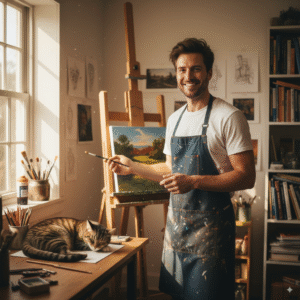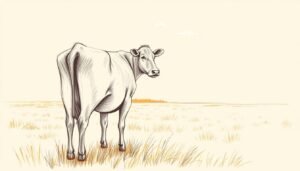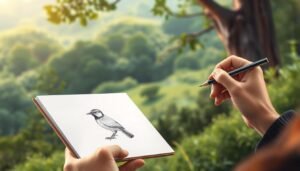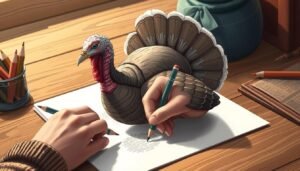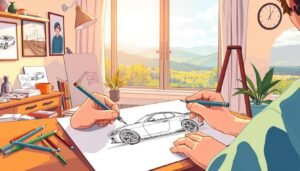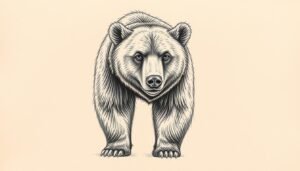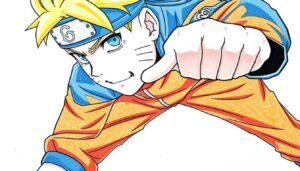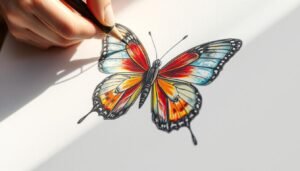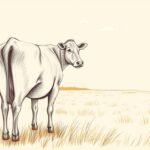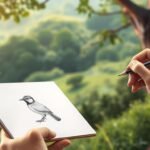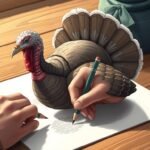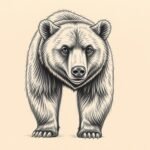Learning to draw people well means knowing a lot about human anatomy and paying close attention to details. I’ll share my knowledge with you. You’ll discover effective techniques to capture your subjects’ essence and make portraits that look real.

In this detailed guide, I’ll show you how to get better at drawing people. We’ll focus on observing and using different techniques. This way, you’ll be able to make figures that make your artwork come alive.
Key Takeaways
- Understand the fundamentals of human anatomy
- Develop your observation skills to capture details
- Learn various techniques to create lifelike portraits
- Improve your overall drawing skills with practice
- Create stunning figures that bring your artwork to life
Understanding Human Anatomy for Drawing
Learning about human anatomy is key for making realistic figure drawings. To draw people well, you need to know the body’s structure.
Basic Proportions of the Human Body
The human body has parts that can be measured. On average, an adult’s body is about 7 to 8 heads tall. The head is the unit of measurement. Accurate proportions are essential for realistic drawings.
| Body Part | Proportion |
|---|---|
| Head | 1 unit |
| Body (from shoulders to hips) | 2-3 units |
| Legs (from hips to feet) | 4 units |
For a deeper understanding, check out Clip Studio Paint’s guide on drawing. It offers detailed insights into human proportions and anatomy.
Key Muscle Groups and Their Impacts
Muscle groups are crucial for the body’s look and movement. The main muscles include the deltoids, biceps, triceps, pectorals, and quadriceps. Knowing how these muscles work together is important for capturing dynamic poses and subtle movements.
The Role of Bone Structure in Posing
The bone structure is the base for muscles and skin. Knowing the skeletal system is vital for drawing figures in different poses. The bones’ interaction at joints affects the figure’s range of motion and posture.
By learning the basics of human anatomy, artists can greatly improve their figure drawing skills. This knowledge helps create more realistic and engaging drawings.
Developing Observation Skills
As an artist, improving your observation skills is key to drawing people well. These skills help you grasp the details of the human body. This leads to more lifelike and interesting drawings.
The Importance of Life Drawing
Life drawing is essential for artists wanting to get better at drawing figures. By drawing the human body directly, you learn its structure and proportions. Regular life drawing sessions boost your skill in capturing the human form’s subtleties.
Observing the human body in various poses teaches you how different parts relate. This improves your drawing abilities overall.

Practicing with Reference Images
Practicing with reference images also sharpens your observation skills. These images let you study the human body from different angles. This is hard to do with life drawing alone.
Using many reference images, you learn how light changes the body’s look. This enhances your knowledge of forms and shadows.
Analyzing Forms and Shadows
Knowing the forms and shadows of the human figure is vital for detailed drawings. By studying how light affects the body, you can draw its three-dimensional look on paper.
Noticing the subtle variations in shading makes your drawings more realistic. It shows the human form’s complexity and depth.
Gesture Drawing: Capturing Movement
Gesture drawing is a key skill for artists wanting to show the energy of the human figure. It’s about quickly drawing the overall pose and movement, not the small details.
To get good at gesture drawing, you need to learn techniques for quick sketching. Watch the subject, find the key parts of the pose, and quickly draw them. The goal is to show the movement’s essence, not make a perfect copy.
Techniques for Quick Sketching
There are a few ways to help with quick sketching. Start by using simple shapes like circles, ovals, and rectangles to outline the body. Then, use smooth lines to show the body’s movement. Lastly, keep practicing to get better at catching the subtleties of human movement.
Exercises to Improve Fluidity
Here are some exercises to make your gesture drawings more fluid:
- Timed sketches: Set a timer for 1-5 minutes and try to finish a sketch before it goes off.
- Gesture drawing sessions: Practice drawing from life or videos, focusing on the overall movement and pose.
- Simple gesture drawing: Use simple shapes and lines to capture the pose’s essence, leaving out extra details.
Understanding the Rhythm of Movement
It’s important to understand the rhythm of movement in gesture drawing. This means seeing the patterns and flows in the human body as it moves. By studying how different body parts work together, you can better show the dynamic nature of your subjects.
| Movement Type | Key Characteristics | Drawing Tips |
|---|---|---|
| Walking | Rhythmic movement, weight transfer | Capture the stride and flow of the legs. |
| Running | Dynamic movement, extended stride | Emphasize the power and fluidity of the motion. |
| Dancing | Flowing movements, varied rhythms | Focus on capturing the grace and fluidity of the dance. |
By mastering gesture drawing and understanding movement, you can draw people more effectively. You’ll capture their energy and movement with confidence.
Facial Features and Expressions
Drawing people well means understanding facial structures and emotions. The face is key in figure drawing. Getting its details right can make a big difference.
Proportions of the Face
Knowing the face’s proportions is crucial for realistic portraits. The face is divided into three parts: the forehead, the area between the eyebrows and the nose, and from the nose to the chin. Accurate measurement is essential for a lifelike look.
| Facial Feature | Proportional Measurement |
|---|---|
| Eyes | One eye width apart |
| Nose | Aligned with the inner corners of the eyes |
| Mouth | Centered between the nose and chin |
Drawing Eyes, Nose, and Mouth
The eyes, nose, and mouth are the face’s most expressive parts. Capturing their subtleties is key to showing emotion. The eyes, for example, are complex, with the iris, pupil, and eyelids all playing a role in expression.

Capturing Emotions through Facial Gestures
Facial expressions are a dynamic part of drawing people. The shape of the eyebrows, lips, or eyes can show a wide range of feelings. By practicing and studying facial movements, artists can accurately show emotions.
Mastering the face’s proportions, features, and expressions can greatly improve figure drawing skills. This leads to more engaging and realistic portraits.
The Importance of Pose and Composition
In figure drawing, pose and composition are crucial. They help show movement and emotion. When I draw people, I aim to capture a pose that tells a story or stirs a feeling.
Choosing Dynamic Poses
Dynamic poses make drawings come alive. I look at natural movement and gesture of the body. For example, a relaxed pose might look different from an active one.
Here are some tips for choosing dynamic poses:
- Observe people in everyday life to capture natural gestures.
- Experiment with different poses in your drawings.
- Use reference images to study the movement and flow of the body.
Understanding Composition Rules
Composition is about arranging elements to make a visually appealing piece. I follow rules like the rule of thirds to guide my drawings.
A well-composed drawing can guide the viewer’s eye. It can tell a story or highlight certain parts.
Balancing Elements in the Frame
Balancing elements in the frame is key for harmony. I think about negative space, subject placement, and visual weight.

| Composition Element | Description | Effect on Drawing |
|---|---|---|
| Rule of Thirds | Dividing the frame into thirds both horizontally and vertically. | Creates balance and interest. |
| Symmetry | Mirroring elements on either side of a central axis. | Conveys order and stability. |
| Negative Space | The empty space around and between subjects. | Enhances focus on the subject. |
Mastering pose and composition helps me create drawings that are not just pretty. They are also engaging and full of emotion.
Clothing and Drapery in Figure Drawing
Clothing and drapery are key in figure drawing, showing movement and texture. They add complexity but can make drawings more realistic and engaging. With the right techniques, you can draw more accurately.

Basics of Drawing Clothing Folds
To draw clothing folds, understand fabric structure and body movement. Observe how fabrics fold on different surfaces. Thicker fabrics make deeper folds, while lighter fabrics are softer.
When drawing folds, think about their direction and depth. Use smooth lines to show fabric texture and movement. Also, notice how folds change with movement for a more dynamic drawing.
How Fabric Affects Movement
Fabric greatly influences clothing movement. Cotton and linen are stiff, making sharp folds. Silk and chiffon are soft, moving fluidly.
Knowing these fabric properties helps you draw clothing movement accurately. By observing fabric behavior, your drawings will look more real.
Representing Different Textures
Different textures in clothing and drapery make drawings more realistic. Study fabric textures, from satins and silks to wool and tweed.
Use various drawing methods to show these textures. Hatching works for rough fabrics, while smooth lines are best for soft ones. Mastering texture representation boosts your drawings’ realism and appeal.
Creating Depth with Shading Techniques
Learning shading techniques is key to adding depth to your drawings. Shading turns a flat drawing into a real-looking human form. It’s all about playing with light and shadow to make your drawings pop.

Types of Shadows in Figure Drawing
In figure drawing, knowing about different shadows is important. These include:
- Cast shadows: Shadows cast by objects or body parts onto other surfaces.
- Form shadows: Shadows that show the body’s three-dimensional shape and outline.
- Atmospheric shadows: Subtle shadows from the atmosphere that add depth.
Techniques for Realistic Shading
To get realistic shading, you need to observe, practice, and use the right techniques. Here are some tips to improve your shading:
- Observe the light source: Knowing the light’s direction and quality is key for real shadows.
- Use a range of shading values: Light to dark shading adds depth and dimension.
- Blend your shading: Smooth transitions between shading values make your drawing look more real.
For more tips on shading, check out this resource for tutorials and advice.
Tools for Effective Shading
The right tools can make a big difference in your shading. Some good tools include:
- Graphite pencils: Different graphite pencils (HB, 2B, 4B, 6B) help with varying shading.
- Charcoal: Charcoal is great for deep shadows and blends well.
- Digital drawing tools: Software like Adobe Photoshop or drawing tablets offer many shading options.
Mastering shading techniques and understanding shadows can greatly improve your figure drawings. Keep practicing and trying new things to get better at shading and adding depth to your art.
Using Color to Enhance Drawings
Color can make your drawings feel more real and emotional. When drawing people, the right colors can make them seem alive. They can show emotions and depth that might not be seen in black and white.
Understanding Color Theory
Color theory is key for artists who want to mix colors well. It teaches about the color wheel, primary and secondary colors, and how they work together. Warm colors like red and yellow make things feel energetic. Cool colors like blue and green calm us down.
Think about the mood you want to show in your drawing. Cool colors can make a scene calm, while warm colors add energy.
Selecting a Color Palette for Portraits
Choosing the right colors is important for portraits. The colors should match the subject’s skin, hair, and clothes. For example, people with cool skin look good in blue and pink, while warm skin tones shine with yellow and golden colors.
| Skin Tone | Complementary Colors | Avoid |
|---|---|---|
| Cool | Blues, Pinks, Purples | Orange, Yellow |
| Warm | Earth Tones, Golden Hues | Cold Pastels |
Techniques for Blending Colors
Blending colors makes your drawings look more real. You can blend by layering, wet-on-wet, or glazing. Start with a light base and add darker shades slowly. This makes the colors blend smoothly.
For digital art, Adobe Photoshop has tools that mimic these techniques. Try different tools and methods to get the look you want.
Common Mistakes to Avoid
Learning to draw people well means knowing what mistakes to avoid. Every skill has its traps, but knowing them helps you learn faster.
Proportional Errors in Figure Drawing
Getting the body’s proportions wrong is a big mistake in drawing figures. Incorrect proportions can make your drawing look off. It’s key to know the basic body proportions.
- Make sure the head is the right size compared to the body.
- Check how long the limbs are compared to the torso.
- Practice measuring and comparing body parts.
Overlooking Gestures and Movement
It’s important to capture the gesture and movement of a figure. Not doing so can make the pose look stiff or unnatural.
- Watch how people move and stand naturally.
- Do gesture drawing to catch the movement’s essence.
- Use quick sketches to practice seeing motion.
Ignoring Background and Context
The background and context of a drawing are key to its impact. Ignoring them can make the figure seem out of place.
- Think about the environment around the figure.
- Use the background to tell a story or add depth.
- Make sure the context fits the figure’s pose and expression.
By avoiding these common mistakes, you can improve your figure drawing skills. This will help you create more engaging and realistic drawings.
Developing Your Personal Style
My journey to find my personal style was all about trying new art techniques and finding inspiration. I learned that having a unique style is key to standing out when drawing people.
I started by exploring different art techniques. I tried out mediums like charcoal, pencils, and paints to see what worked best for me. Mixing techniques helped me create unique effects in my drawings.
Exploring Different Art Techniques
Trying out different art techniques is a great way to find your personal style. For example, I learned about gesture drawing. This technique helps capture the essence of a figure quickly.
I also learned about color theory and how to use it in my drawings. Understanding color palettes and blending helped add depth and emotion to my work.
Finding Inspiration from Other Artists
Finding inspiration from other artists is crucial. I visited art galleries, attended exhibitions, and followed artists on social media. For instance, Anna Bregman Portraits was a big influence on my drawing skills.
Looking at other artists’ work helped me see what I liked about their styles. I then tried to incorporate those elements into my own work.
Integrating Your Unique Perspectives
Adding your own unique perspectives to your drawings makes you stand out. I made sure to include elements that reflected my own experiences and viewpoints.
To show how different techniques work, I made a comparison table:
| Technique | Description | Application |
|---|---|---|
| Gesture Drawing | Quickly sketching the overall pose and movement | Capturing the essence of a figure |
| Color Theory | Understanding color palettes and blending | Adding depth and emotion to drawings |
| Shading Techniques | Creating depth with shading | Enhancing the realism of drawings |
By trying new techniques, finding inspiration, and adding my own twist, I developed a personal style that’s truly mine.
Digital Tools for Drawing People
The rise of digital art has brought many tools to help artists draw people. These tools get better with technology, giving artists more ways to improve their work.
Software Options for Digital Art
There are many digital art software options, each with its own features. Some top choices include:
- Clip Studio Paint: It’s versatile and has many features like tone curves and texture overlays.
- Adobe Photoshop: A top tool for editing, it has advanced features and lots of brushes.
- Krita: Free and customizable, it has various brush engines.
For tips on starting with digital art software, check out Clip Studio’s tutorial page. It has great guides and tips.
Drawing Tablets and Hardware Recommendations
A good drawing tablet is key for digital art. Look for one with good pressure sensitivity, an ergonomic design, and works well with your computer.
“A drawing tablet that feels comfortable to use can greatly improve your drawing experience.” – Digital Art Pro
Here are some drawing tablets to consider:
- Wacom Intuos: It has tilt recognition and a battery-free stylus.
- Huion GT-220: It’s affordable, has a big drawing area, and customizable buttons.
Useful Online Resources and Tutorials
Online resources and tutorials can also help improve your digital art. Some great ones include:
- Proko: It offers free drawing lessons and exercises.
- Skillshare: It has online courses and workshops on digital art and drawing.
- New Masters Academy: It has in-depth tutorials on figure drawing and anatomy.
Using these digital tools and resources can really help artists draw people better. They can make amazing digital art.
Building a Portfolio
As an artist, having a portfolio is key. It shows off your skills and brings in new chances. A good portfolio tells your artistic story.
Showcasing Your Best Work
To show your best, pick carefully. Choose pieces that show your skill and variety. Include different drawings to show what you can do.
For example, if you’re great at drawing people, show a variety of portraits and figures. This shows you can capture many emotions and poses.
Organizing Your Drawings by Theme
Organizing by theme helps clients see your range. Themes can be by type, like portraits or landscapes, or by technique, like charcoal or watercolor.
Here’s how to organize your portfolio:
| Theme | Description | Examples |
|---|---|---|
| Portraits | Drawings that focus on capturing the likeness and essence of individuals. | Charcoal portraits, realistic drawings |
| Figure Drawings | Drawings that focus on the human figure, capturing movement and gesture. | Gesture drawings, detailed figure studies |
Tips for Presenting Your Portfolio
When showing your portfolio, make it easy to follow. Here are some tips:
- Use a clean and simple layout that lets your artwork shine.
- Include a brief introduction or artist statement that explains your approach and inspiration.
- Make sure your contact information is easily accessible.
- Consider creating both a physical and digital version of your portfolio.
By following these tips and making a strong portfolio, you’ll show your skills. This will attract new opportunities in the art world.
Continuous Improvement and Practice
To get better at drawing people, you need to keep improving and practicing. Spending time to hone your skills will make your drawings more realistic and interesting. Setting goals is key to your art journey. It lets you see how far you’ve come and keeps you motivated.
Setting Achievable Goals
Having clear goals helps you stay on track with your art. For example, you might aim to draw for 15-30 minutes every day, as Daisy Yellow Art suggests. This regular practice will boost your ability to draw people.
Joining a Community for Feedback
Being part of a drawing community offers feedback and support. Talking with other artists can show you where you need to get better. It also gives you new ideas on how to draw people well.
Reviewing Progress and Techniques
It’s important to check your progress and techniques often. Looking at your work helps you improve and try new things. This way, you can make your drawings even better.



